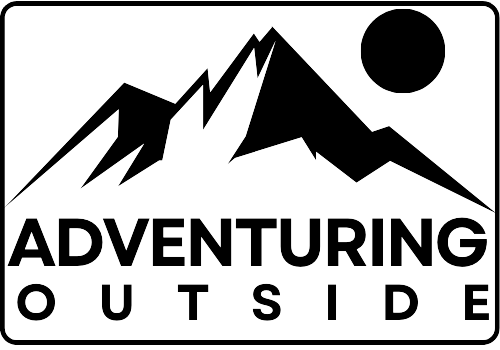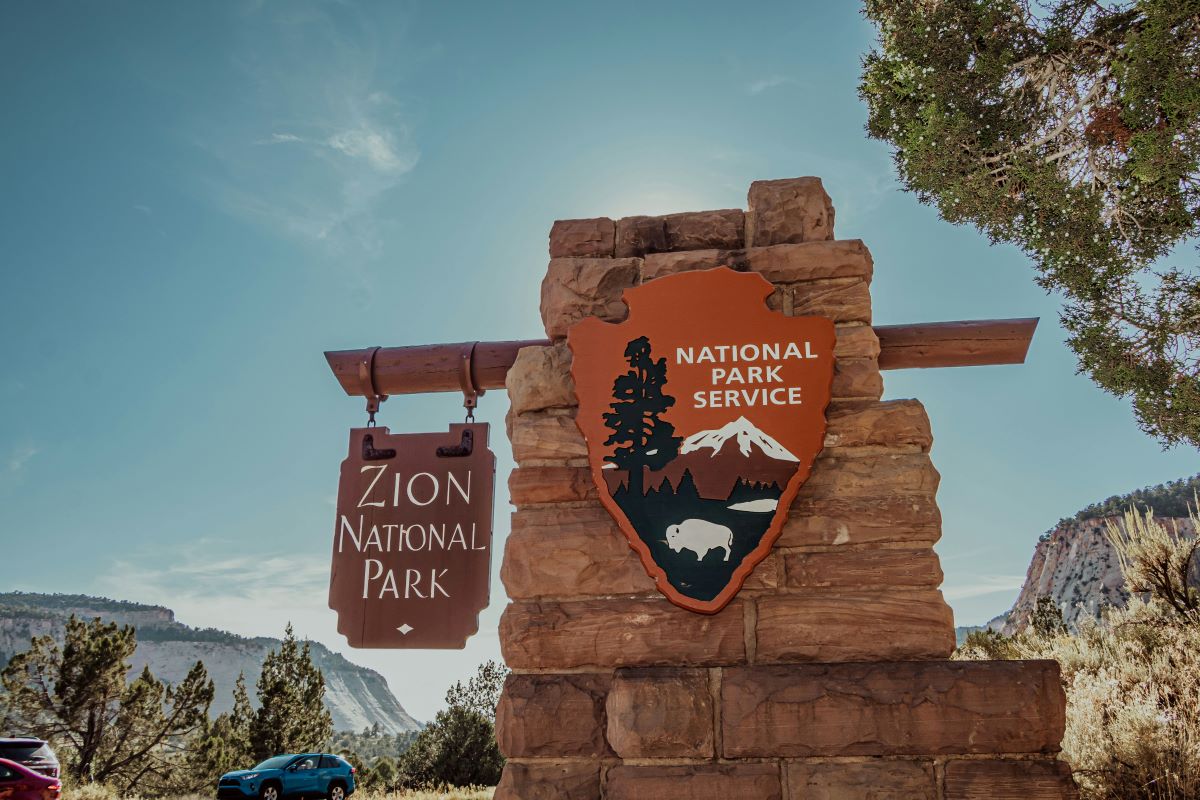Nestled in the southwestern corner of Utah, Zion National Park stands as a beacon of natural beauty, attracting outdoor enthusiasts from around the world. Its rugged landscape is a masterpiece of towering cliffs, narrow canyons, and diverse plant and animal life, carved out by the Virgin River. Whether one seeks the thrill of a challenging hike or the tranquility of a peaceful walk, Zion offers a variety of trails that cater to all experience levels and ages, providing unforgettable experiences for every visitor.
With a selection of hikes that range from the iconic trek up to Angels Landing to the accessibility of the Riverside Walk, there’s a perfect trail for everyone in this majestic park. While some paths lead adventurers through the heart of Zion’s red rock formations, others offer quieter journeys to lesser-known corners of the park. Each trail not only promises its own unique set of scenic vistas but also a chance to witness the park’s rich biodiversity. For those prepared for backcountry adventures, overnight hikes into the park’s wilderness present an entirely different challenge and reward.
Key Takeaways
- Zion National Park in Utah offers diverse hiking experiences for all levels.
- Iconic trails provide breathtaking views, while family-friendly paths ensure accessibility.
- Proper planning and environmental responsibility enhance the visitor experience.
Iconic Hikes and Trails
Among the most striking features of Zion National Park are its iconic hikes and trails. These paths offer an immersive experience into the unique geology and breathtaking vistas of the park.
Angels Landing
Angels Landing seduces thrill-seekers with its infamous steep switchbacks and narrow ridge paths, with chains anchored into the rock to aid hikers. The 5.4-mile round-trip hike is strenuous and requires caution, especially on the final half-mile where the trail is flanked by precipitous drops.
- Length: 5.4 miles round trip
- Est. Time: 4-5 hours
- Difficulty: Strenuous
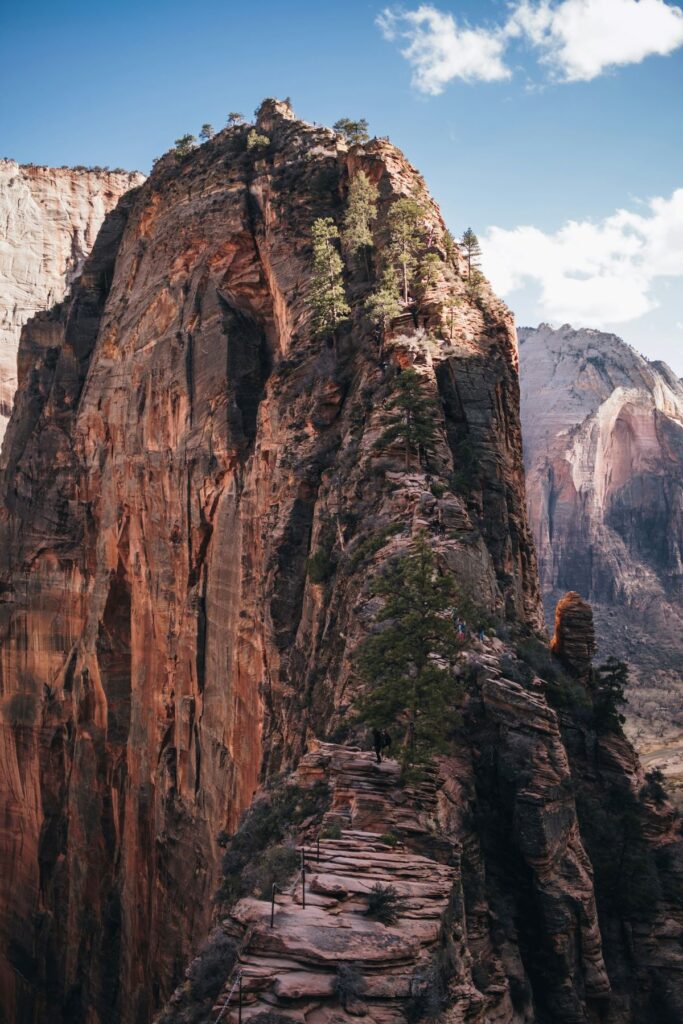
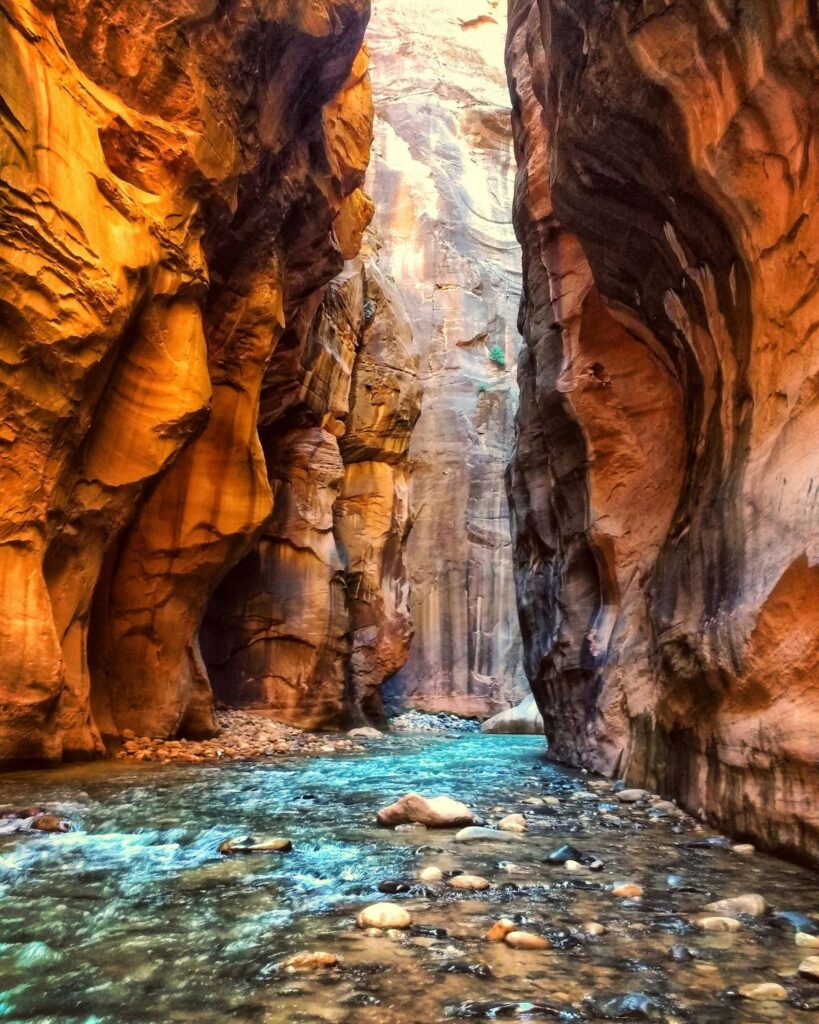
The Narrows
Hiking The Narrows entails trekking through the Virgin River, surrounded by towering canyon walls. It’s a unique hike that can vary in length, depending on how far one ventures. The river serves as the trail for up to 16 miles one-way from Chamberlain’s Ranch back to the park.
- Length: Up to 16 miles one-way
- Est. Time: 6–8 hours
- Difficulty: Moderate to Strenuous, depending on the distance you go into The Narrows
Emerald Pools Trail
The Emerald Pools Trail is a family-friendly hike that leads visitors to a series of connected pools and waterfalls. There are three sections: Lower, Middle, and Upper Emerald Pools, each offering unique views and varying in difficulty.
- Length: 1.2 to 3 miles round trip
- Est. Time: 1-3 hours
- Difficulty: Easy to Moderate
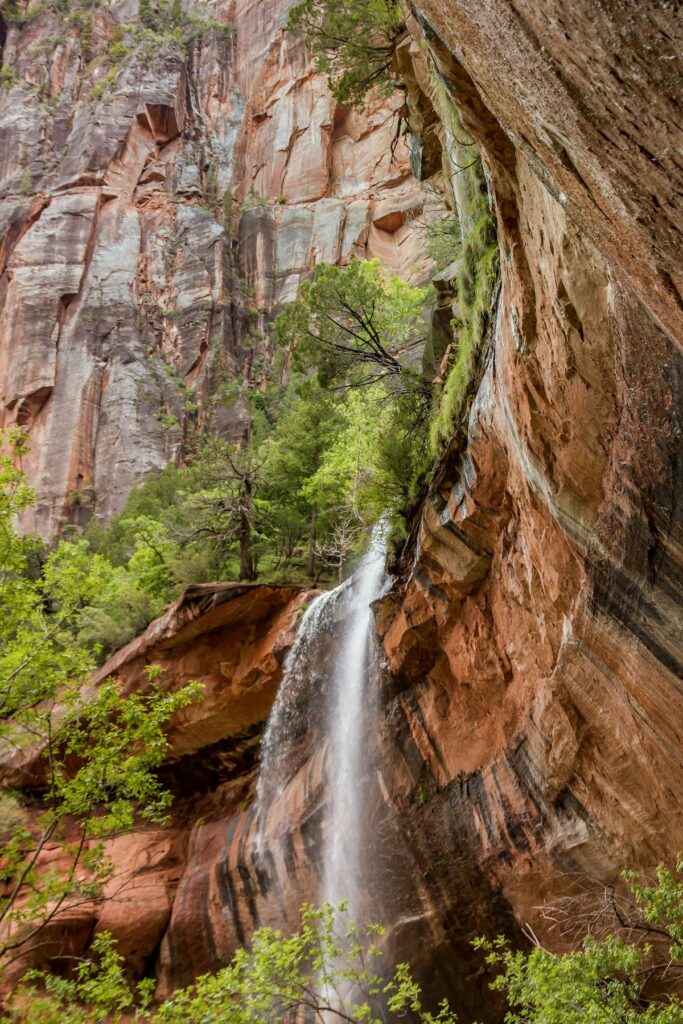
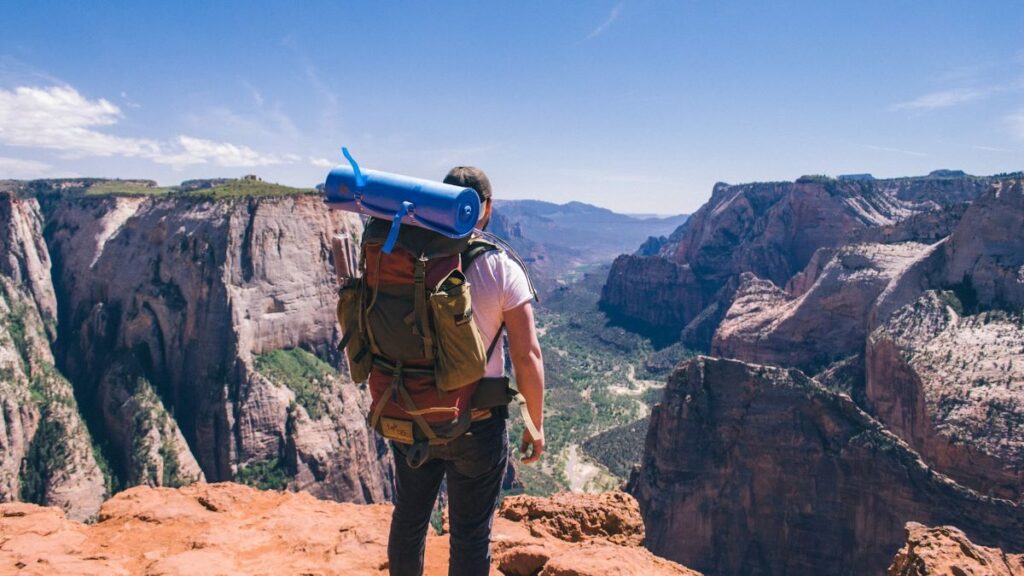
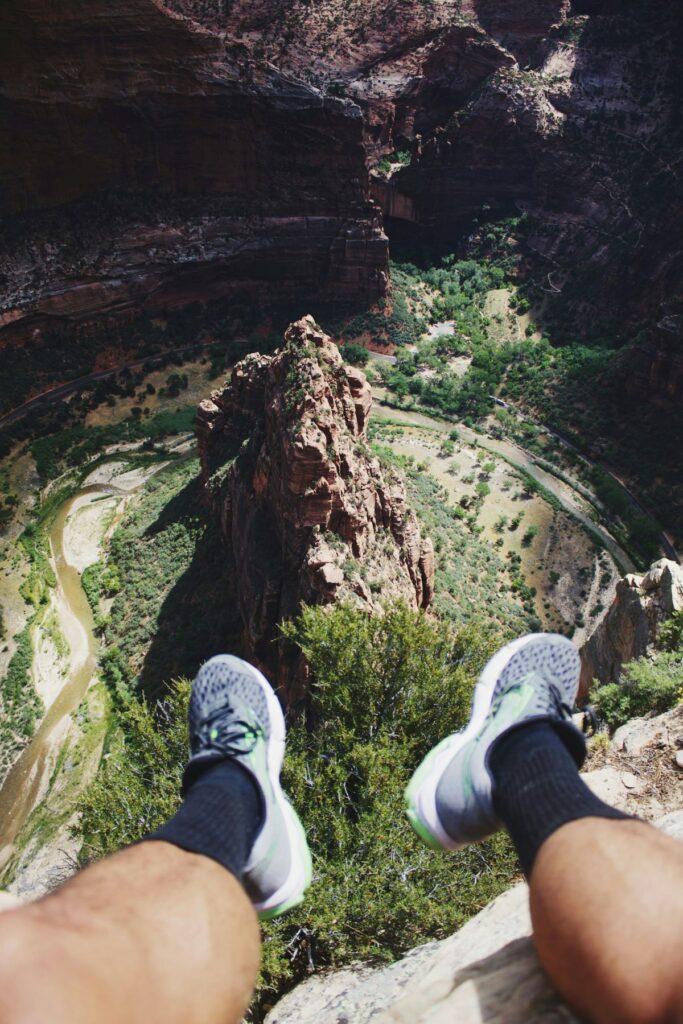
Observation Point
From Observation Point, hikers gaze down on Zion Canyon and many of the park’s famed peaks. The trail winds it way up through a slot canyon and across a mesa, culminating in panoramic views. The 8-mile round-trip hike is challenging but offers a quieter alternative to the more crowded Angels Landing.
- Length: 8 miles round trip
- Est. Time: 4-6 hours
- Difficulty: Strenuous
Family-Friendly and Easy Hikes
Zion National Park offers several trails that are perfect for families and those looking for a leisurely hike. Below are some of the best options that combine easy paths with the stunning scenery of Zion.
Pa’Rus Trail
The Pa’Rus Trail provides an accessible, paved path suitable for all ages and is also pet-friendly. This trail boasts a length of approximately 3.5 miles roundtrip and offers spectacular views of the surrounding cliffs. It is a prime spot for sunset views, as the colors reflect beautifully on the Virgin River which accompanies hikers along the path.
Riverside Walk
Another family favorite is the Riverside Walk, also known as the Gateway to The Narrows. This easy trail is about 2.2 miles roundtrip and gently meanders along the Virgin River. It is mostly paved and shaded with a canopy of trees, making it quite comfortable even during warmer days. This walk is a visual treat and is suitable for hikers of all ages thanks to its hanging gardens and weeping rocks.
Lower Emerald Pool Trail
For a picturesque yet minimal challenge, the Lower Emerald Pool Trail is an excellent choice. This trail, about 1.2 miles roundtrip, leads to the Lower Emerald Pools, a collection of waterfalls and pools with lush surroundings. Although it may involve some steps and sandy patches, it is still considered an easy hike, and the captivating views at the pools make it a rewarding experience for the whole family.
Backcountry Adventures
Backcountry hiking in Zion National Park offers a tranquil escape to those seeking solitude and an immersive experience within Zion’s wilderness. Stepping into the backcountry requires preparation and adherence to park regulations to ensure both hiker safety and environmental preservation.
Kolob Canyons Exploration
Kolob Canyons, a remote section of Zion National Park, rewards backpackers with stunning, less-visited trails and dramatic cliff faces. Unlike the more frequented areas of the park, Kolob Canyons offers an opportunity to find solitude and engage with a rugged and pristine landscape. Backpackers should prepare for variable conditions and self-sufficiency as services are minimal and visitor centers are farther away.
Wilderness Permits and Regulations
To embark on a backpacking trip in Zion’s wilderness, hikers must obtain a wilderness permit, which is mandatory for all overnight stays. These permits are critical not only for the safety of hikers but also for managing visitor use to mitigate environmental impact. Hikers can obtain permits from the Zion National Park visitor centers or online.
- Permit Availability: Limited. Book in advance.
- Permit Pickup: In person at visitor centers or online.
- Rules and Regulations:
- Pack out all trash,
- Camp only in designated sites,
- No campfires are allowed in the wilderness to prevent wildfires and reduce impact.
Backpacking through the park offers a way to intimately connect with nature, but hikers should always be well-prepared and mindful of the park’s efforts to conserve this unique landscape for future generations.
Natural Features and Scenic Spots
Zion National Park boasts a plethora of natural wonders, showcasing some of the most iconic and awe-inspiring features and vistas. Among these are the Zion Canyon Overlook, Weeping Rock, and Kolob Arch, each offering unique perspectives of Utah’s majestic landscapes.
Zion Canyon Overlook
The Zion Canyon Overlook provides one of the most stunning views within the park. Visitors will see a panoramic spectacle of the Zion Canyon, capturing its depth and grandeur. The vantage point is especially popular at sunset when the colors of the canyon walls intensify.
Weeping Rock
Weeping Rock is a remarkable attraction famous for its dripping springs that create a “weeping” facade over the overhanging cliff. This short, steep hike takes visitors directly under the water-sprinkled rock alcove, with breathtaking views of the lush hanging gardens and the nearby Great White Throne.
Kolob Arch
Tucked away in the park’s backcountry, the Kolob Arch is one of the world’s largest natural arches. The arch offers a captivating sight for those willing to undertake the strenuous hike required to reach it. Though less visited than other spots, it provides a serene experience for avid hikers seeking solitude and natural beauty.
Planning Your Trip
When visiting Zion National Park in Utah, travelers should consider seasonal weather, operational hours of park facilities, and safety guidelines to ensure a rewarding hiking experience.
Best Time to Visit
Zion National Park can be visited year-round, but the spring (April to June) and fall (September to November) offer the most pleasant temperatures for hiking. Summer months tend to be hot with temperatures often exceeding 100°F, while winter can bring cold weather and occasional snow, particularly at higher elevations. Visitors should check current conditions before their trip, as weather can affect trail accessibility.
Zion Visitor Center
The Zion Visitor Center is a critical starting point for visitors. It operates daily, with hours varying by season. Here, one can find maps, exhibits, and information on current conditions, trail closures, and ranger-led programs. For updated operational hours, travelers should refer to the National Park Service’s official Zion National Park website or contact the visitor center directly.
Safety and Preparedness
Safety is crucial when hiking in Zion National Park. Visitors should wear appropriate footwear, carry sufficient water, and be mindful of rapidly changing weather conditions. Check trail conditions before departure, and be prepared for the park’s diverse terrain which ranges from easy walks to strenuous climbs. Always carry a first aid kit and be aware of signs of heat exhaustion or dehydration during warmer months. Remember – the park operates on a carry-in, carry-out principle, so pack out all trash to protect the environment.
Navigating the Park
Efficient navigation in Zion National Park greatly enhances the hiking experience due to the unique transportation systems and environmental conditions. Visitors must be mindful of the park’s specific rules regarding shuttle services, driving restrictions, and ever-changing trail access.
Zion Shuttle System
Zion National Park operates a shuttle bus system designed to reduce traffic congestion along the Zion Canyon Scenic Drive and to provide easy access to major trailheads. The shuttle is mandatory during the peak tourist seasons, generally from early spring to late fall. Visitors should check the current schedule as it varies by season and is subject to change for special events or due to unforeseen circumstances like flash flooding.
- First shuttle from the Visitor Center: Check precise times, as they change seasonally.
- Last shuttle returning to the Visitor Center: Consult the specific timings for the date of visit.
- Stops: Shuttles stop at nine locations – don’t miss the stop for famous hikes like Angel’s Landing.
Driving and Parking
Private vehicles are allowed on Zion Canyon Scenic Drive only when the shuttle system is not in operation, typically during the off-peak winter months. During shuttle operation periods, personal vehicle access is restricted. Parking within the park is limited, and lots often fill by mid-morning. Visitors should plan to park in the town of Springdale and use the free town shuttle to reach the park’s entrance.
- Parking Tips:
- Arrive early to secure a parking spot.
- Utilize Springdale parking when parking lots are full.
- Check parking availability and restrictions on the park’s website.
Trail Closures and Conditions
Trail conditions can fluctuate rapidly in Zion National Park due to various factors, including weather changes and flash floods, which can lead to sudden trail closures. Visitors need to check the current trail status on the park’s official website or at visitor centers.
- Key Information Sources:
- Zion National Park’s website for real-time updates.
- Information boards at the park’s Visitor Center.
- Rangers who provide the latest announcements and safety advisories.
Visitors can maximize their experience by being prepared, arriving early, and staying informed about Zion National Park’s shuttle schedules, parking guidelines, and trail conditions.
Environmental Responsibility
When visiting Zion National Park, hikers have a responsibility to minimize their environmental impact. Understanding and practicing Leave No Trace principles are critical to conserving the park’s natural beauty, including its delicate slot canyons.
Leave No Trace Principles
Plan Ahead and Prepare: Hikers should research the trails and weather conditions to ensure they are well-prepared for their hike in Zion National Park.
Travel and Camp on Durable Surfaces: To prevent erosion and habitat destruction, individuals should stick to established trails and avoid cutting switchbacks. Zion’s slot canyons and riversides are particularly vulnerable and should be treated with care.
Dispose of Waste Properly: All waste must be packed out, and human waste should be disposed of in designated areas or using proper waste disposal techniques.
Leave What You Find: Rock formations, vegetation, and historical artifacts contribute to Zion’s wonder and should not be disturbed.
Minimize Campfire Impacts: Campfires can scar the landscape and deplete limited wood resources. Use a camp stove for cooking and enjoy the stars over a natural night sky.
Respect Wildlife: Feeding or approaching wildlife disrupts their natural behavior and diet. Observe from a distance.
Be Considerate of Other Visitors: The experience of others should be respected. Keep noise levels down and yield to other hikers on the trail.
Environmental Impact and Preservation
Assessing Impact: Zion National Park’s diverse landscapes, including its slot canyons, are sensitive to human impact. Trails and natural features are monitored to identify areas in need of restoration or protection.
Active Preservation: Efforts include native species restoration, invasive species removal, and trail maintenance. These actions ensure that Zion’s ecosystems, and the experiences they offer, endure for future generations.
Each visitor’s actions directly affect the health and beauty of Zion National Park. By adhering to these principles and understanding their role in preservation, hikers ensure that this cherished landscape remains pristine and welcoming for all who seek its wonders.
Beyond the Beaten Path
Zion National Park offers trails that lead to less trafficked, serene areas, delivering unique experiences for those who seek solitude and the splendor of Zion’s lesser-known landscapes.
Hidden Canyon Trail
Hidden Canyon Trail grants adventurers a chance to explore a hanging slot canyon. This trail includes elements of challenge, such as steep switchbacks and minor rock scrambling. It rewards hikers with the tranquility and intimate atmosphere of Hidden Canyon, set apart from the park’s bustling main trails.
The Subway
Named for its tunnel-like, tubular carved rock formations, The Subway is an exceptional backcountry hike resembling a subway tunnel. Advanced preparation is required as permits are mandatory for this trek. The route demands technical skills for creek crossings and navigation of slippery rocks but promises a visual spectacle of uniquely eroded geologic features.
Orderville Canyon
As a tributary to the famous Zion Narrows, Orderville Canyon is an exquisite slot canyon that offers a sense of seclusion and a quieter, yet equally beautiful alternative. This canyon requires hikers to wade through streams and overcome occasional obstacles, which enriches the experience of the trek through this narrower slot canyon. Enthusiasts often note the diversity of rock colors and formations that line Orderville’s passage.
Frequently Asked Questions
Zion National Park’s diverse set of trails caters to a range of experiences from family-friendly hikes to challenging adventures, each showcasing the park’s unique geological features.
What are some family-friendly trails suitable for children in Zion National Park?
The Pa’rus Trail offers an easy and scenic option for families with children, being both paved and relatively flat. The Riverside Walk is another gentle trail that leads to the entrance of The Narrows, giving kids an opportunity to appreciate the Virgin River and surrounding nature.
Aside from Angels Landing, what other iconic trails should hikers consider in Zion?
Hikers should consider the scenic Emerald Pools Trail, which features waterfalls and beautiful pools, as well as The Watchman Trail, known for its impressive vistas of the lower Zion Canyon and the town of Springdale.
What unique geological features can explorers expect to see while hiking in Zion?
Zion’s trails provide up-close views of towering cliffs, deep canyons, high plateaus, and rock towers. Hiking The Narrows exposes explorers to the park’s slot canyons carved by the Virgin River, while other trails like Observation Point showcase broad, panoramic canyon views.
How does the Canyon Overlook Trail provide a different experience from other hikes in Zion?
The Canyon Overlook Trail offers a shorter and less strenuous hike leading to an overlook with panoramic views of the lower canyon, with opportunities to see the Great Arch and varied wildlife, making it a distinctive experience in Zion National Park.
For those seeking a challenging adventure, how does The Narrows rate as a hike in Zion National Park?
The Narrows is considered one of the premier hikes in Zion National Park for the adventurous, rated as challenging due to hiking in the Virgin River, potential for swift currents, and the necessity of navigating around boulders and obstacles within a slot canyon setting.
Which trail offers the most comprehensive views of Zion National Park?
Observation Point provides expansive views of Zion Canyon, allowing hikers to see landmarks such as Angels Landing and the Great White Throne, making it one of the best trails for a comprehensive view of the park’s grandeur.
